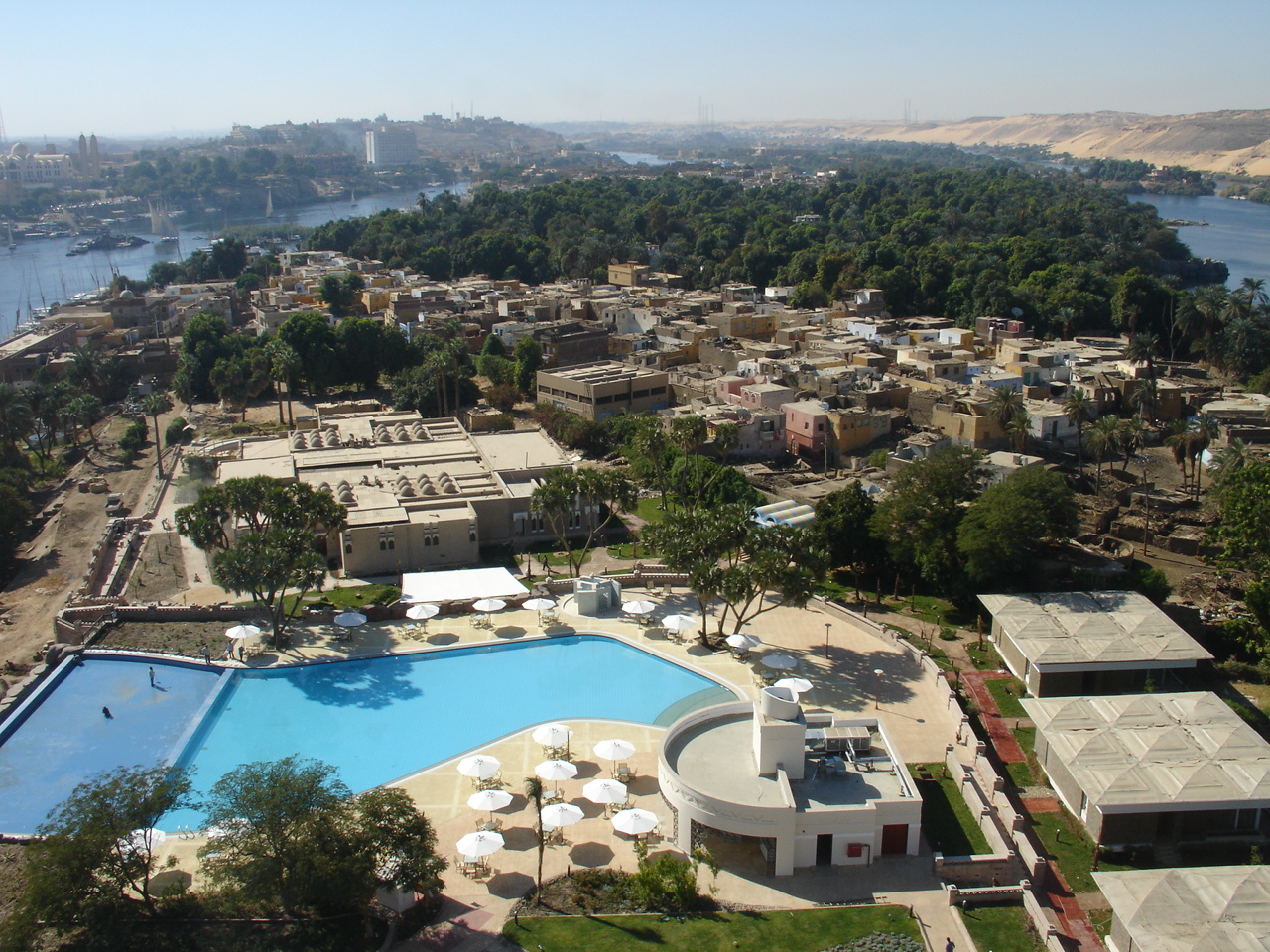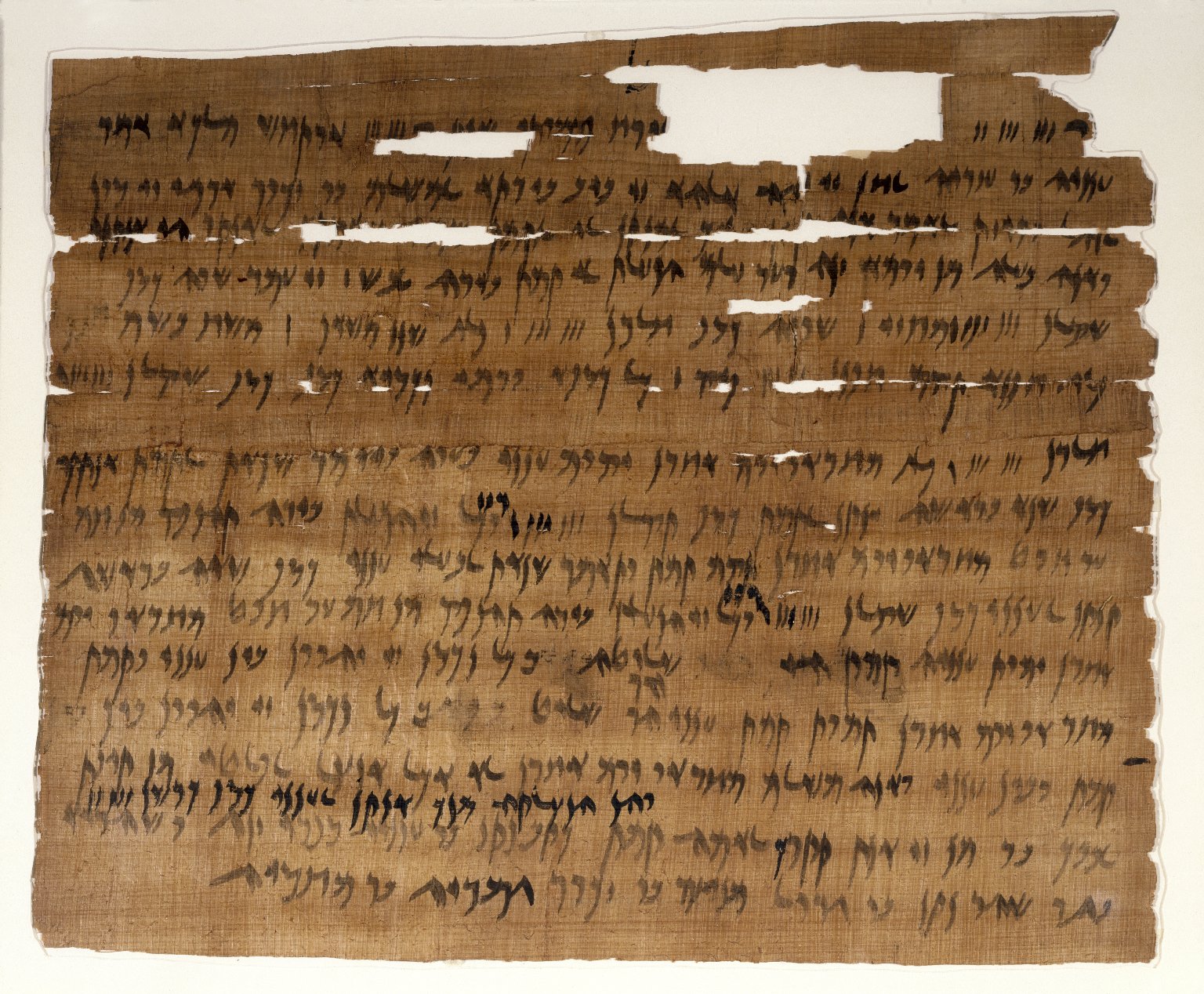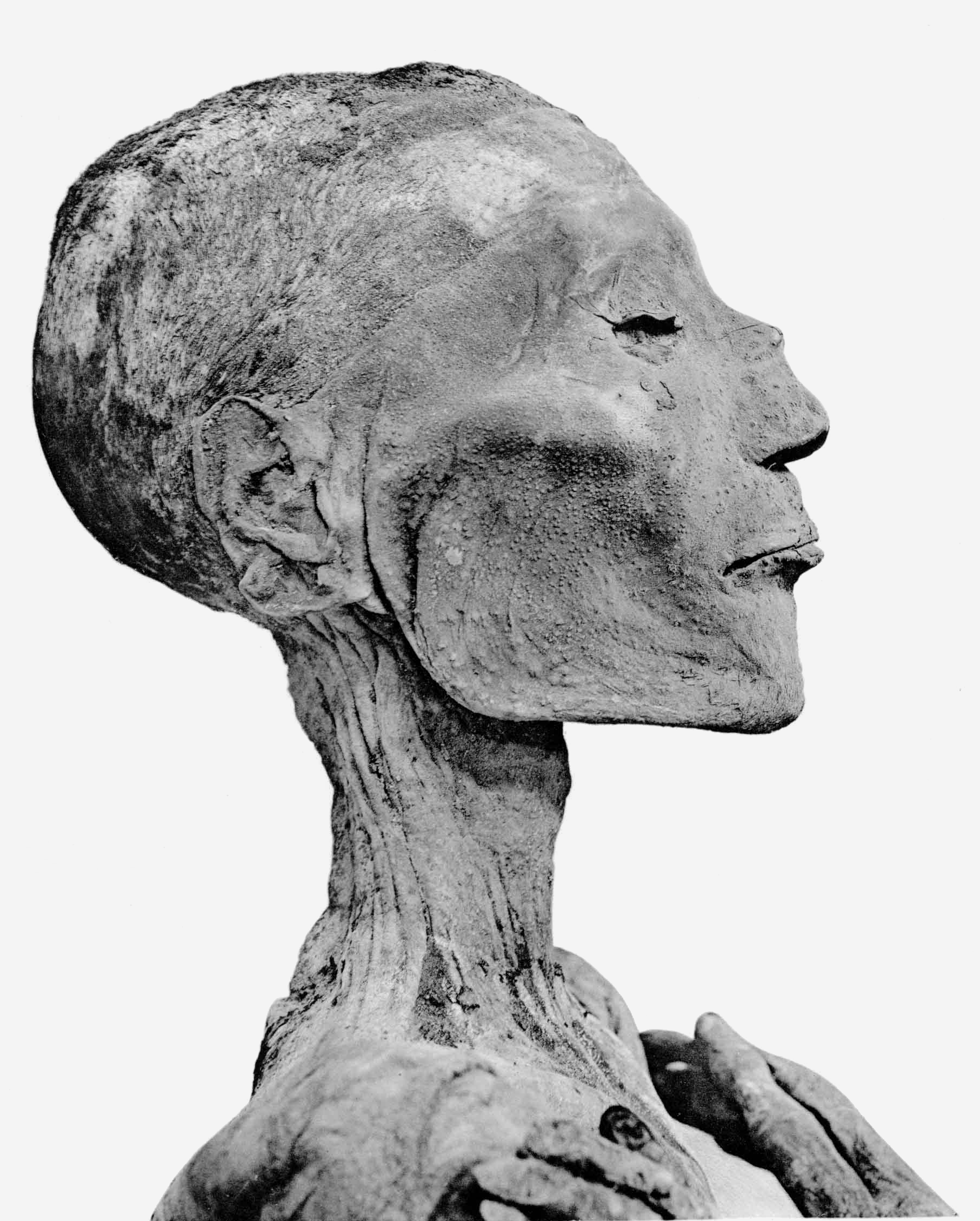|
Papyrus Wilbour
The Wilbour Papyrus is the largest known non-funerary papyrus from Ancient Egypt, named after the New York journalist Charles Edwin Wilbour who acquired it in 1893. History Charles Edwin Wilbour purchased seventeen papyri from a farmer when he visited the island of Elephantine near Aswan in 1893. Among these was the text now called the Wilbour Papyrus. He did not realize the importance of this find and, when he died in a hotel in Paris in 1896, his belongings, including the papyri (among these the Brooklyn Papyrus and the Elephantine Papyri), were put in storage by the hotel. When Wilbour's property was returned to his family, nearly half a century later, his widow donated the papyri to the Brooklyn Museum. The Wilbour Papyrus is to ancient Egypt what the census bureau is to us today. It was translated by Alan Gardiner. Most of the first section of the papyrus was lost due to decomposition. The better preserved information begins in section two which starts off with “year 4, ... [...More Info...] [...Related Items...] OR: [Wikipedia] [Google] [Baidu] |
Ancient Egyptian Funerary Texts
The literature that makes up the ancient Egyptian funerary texts is a collection of religious documents that were used in ancient Egypt, usually to help the spirit of the concerned person to be preserved in the afterlife. They evolved over time, beginning with the Pyramid Texts in the Old Kingdom through the Coffin Texts of the Middle Kingdom and into several books, most famously the Book of the Dead, in the New Kingdom and later times. Old Kingdom The funerary texts of the Old Kingdom were initially reserved for the king only. Towards the end of the period, the texts appeared in the tombs of royal wives. Middle Kingdom These are a collection of ancient Egyptian funerary spells written on coffins beginning in the First Intermediate Period. Nearly half of the spells in the Coffin Texts derive from those in the Pyramid Texts. New Kingdom *Book of the Dead *Amduat *Spell of the Twelve Caves * The Book of Gates *Book of the Netherworld *Book of Caverns * Book of the Earth *Litany ... [...More Info...] [...Related Items...] OR: [Wikipedia] [Google] [Baidu] |
Papyrus
Papyrus ( ) is a material similar to thick paper that was used in ancient times as a writing surface. It was made from the pith of the papyrus plant, '' Cyperus papyrus'', a wetland sedge. ''Papyrus'' (plural: ''papyri'') can also refer to a document written on sheets of such material, joined side by side and rolled up into a scroll, an early form of a book. Papyrus is first known to have been used in Egypt (at least as far back as the First Dynasty), as the papyrus plant was once abundant across the Nile Delta. It was also used throughout the Mediterranean region. Apart from a writing material, ancient Egyptians employed papyrus in the construction of other artifacts, such as reed boats, mats, rope, sandals, and baskets. History Papyrus was first manufactured in Egypt as far back as the fourth millennium BCE.H. Idris Bell and T.C. Skeat, 1935"Papyrus and its uses"(British Museum pamphlet). The earliest archaeological evidence of papyrus was excavated in 2012 and 2 ... [...More Info...] [...Related Items...] OR: [Wikipedia] [Google] [Baidu] |
Charles Edwin Wilbour
Charles Edwin Wilbour (March 17, 1833 – December 17, 1896) was an American journalist and Egyptologist. Wilbour is noted as one of the discoverers of the Elephantine Papyri and the creator of the first English translation of ''Les Misérables''. Biography Charles Edwin Wilbour was born in Little Compton, Rhode Island, on March 17, 1833. He received a classical education and entered Brown University, where he took a prize for proficiency in Greek and was noted for his thorough acquaintance with the ancient and modern languages, but did not graduate due to poor health. Having taught himself shorthand, when he had sufficiently recovered, he went to New York City in 1854 and became connected with the ''New York Herald Tribune'' as a reporter. Wilbour also studied law and was admitted to the bar in 1859. Over the following eighteen years, he devoted himself to literary and journalistic work. In 1872, Wilbour began the study of Egyptian antiquities, visiting the principal libraries ... [...More Info...] [...Related Items...] OR: [Wikipedia] [Google] [Baidu] |
Elephantine
Elephantine ( ; ; arz, جزيرة الفنتين; el, Ἐλεφαντίνη ''Elephantíne''; , ) is an island on the Nile, forming part of the city of Aswan in Upper Egypt. The archaeological sites on the island were inscribed on the UNESCO World Heritage List in 1979 along with other examples of Upper Egyptian architecture, as part of the " Nubian Monuments from Abu Simbel to Philae" (despite Elephantine being neither Nubian, nor between Abu Simbel and Philae). Geography Elephantine is from north to south, and is across at its widest point. The layout of this and other nearby islands in Aswan can be seen from west bank hillsides along the Nile. The island is located just downstream of the First Cataract, at the southern border of Upper Egypt with Lower Nubia. This region above is referred to as Upper Egypt because it is further up the Nile. The island may have received its name after its shape, which in aerial views is similar to that of an elephant tusk, or from the rou ... [...More Info...] [...Related Items...] OR: [Wikipedia] [Google] [Baidu] |
Aswan
Aswan (, also ; ar, أسوان, ʾAswān ; cop, Ⲥⲟⲩⲁⲛ ) is a city in Southern Egypt, and is the capital of the Aswan Governorate. Aswan is a busy market and tourist centre located just north of the Aswan Dam on the east bank of the Nile at the first cataract. The modern city has expanded and includes the formerly separate community on the island of Elephantine. Aswan includes five monuments within the UNESCO World Heritage Site of the Nubian Monuments from Abu Simbel to Philae (despite Aswan being neither Nubian, nor between Abu Simbel and Philae); these are the Old and Middle Kingdom tombs of Qubbet el-Hawa, the town of Elephantine, the stone quarries and Unfinished Obelisk, the Monastery of St. Simeon and the Fatimid Cemetery. The city's Nubian Museum is an important archaeological center, containing finds from the International Campaign to Save the Monuments of Nubia prior to the Aswan Dam's flooding of all of Lower Nubia. The city is part of the UNESCO Cr ... [...More Info...] [...Related Items...] OR: [Wikipedia] [Google] [Baidu] |
Brooklyn Papyrus
The Brooklyn Papyrus (''47.218.48'' and ''47.218.85'', also known as the Brooklyn Medical Papyrus) is a medical papyrus dating from ancient Egypt and is one of the oldest preserved writings about medicine and ophiology. The manuscript is dated to around 450 BCE and is today kept at the Brooklyn Museum in New York. The term ''Brooklyn Papyrus'' can also refer to Brooklyn Papyrus 35.1446br> The manuscript The Brooklyn Papyrus consists of a scroll of papyrus divided into two parts with some parts missing, its total length is estimated to 175 × 27 cm. The text is on the recto side. The different numbers refer to the upper part (-48, 66,5 × 27,5 cm) and the lower part (-85, 66,5 × 27,5 cm) of the scroll. The manuscript is a collection, the first part systematically describing a number of different snakes and the second part describing different treatments for snakebites. The manuscript also contains treatments of scorpion bites and spider bites. The papyrus sc ... [...More Info...] [...Related Items...] OR: [Wikipedia] [Google] [Baidu] |
Elephantine Papyri
The Elephantine Papyri and Ostraca consist of thousands of documents from the Egyptian border fortresses of Elephantine and Aswan, which yielded hundreds of papyri and ostraca in hieratic and demotic Egyptian, Aramaic, Koine Greek, Latin and Coptic, spanning a period of 100 years. The documents include letters and legal contracts from family and other archives, and are thus an invaluable source of knowledge for scholars of varied disciplines such as epistolography, law, society, religion, language and onomastics. The Elephantine documents include letters and legal contracts from family and other archives: divorce documents, the manumission of slaves, and other business. The dry soil of Upper Egypt preserved the documents. Hundreds of these Elephantine papyri span a period of 100 years, during the 5th to 4th centuries BCE. Legal documents and a cache of letters survived, turned up on the local "grey market" of antiquities starting in the late 19th century, and were scattered int ... [...More Info...] [...Related Items...] OR: [Wikipedia] [Google] [Baidu] |
Brooklyn Museum
The Brooklyn Museum is an art museum located in the New York City borough of Brooklyn. At , the museum is New York City's second largest and contains an art collection with around 1.5 million objects. Located near the Prospect Heights, Crown Heights, Flatbush, and Park Slope neighborhoods of Brooklyn, the museum's Beaux-Arts building was designed by McKim, Mead and White. The Brooklyn Museum was founded in 1898 as a division of the Brooklyn Institute of Arts and Sciences and was planned to be the largest art museum in the world. The museum initially struggled to maintain its building and collection, only to be revitalized in the late 20th century, thanks to major renovations. Significant areas of the collection include antiquities, specifically their collection of Egyptian antiquities spanning over 3,000 years. European, African, Oceanic, and Japanese art make for notable antiquities collections as well. American art is heavily represented, starting at the Colonial period. A ... [...More Info...] [...Related Items...] OR: [Wikipedia] [Google] [Baidu] |
Alan Gardiner
Sir Alan Henderson Gardiner, (29 March 1879 – 19 December 1963) was an English Egyptologist, linguist, philologist, and independent scholar. He is regarded as one of the premier Egyptologists of the early and mid-20th century. Personal life Gardiner was born on 29 March 1879 in Eltham, then in Kent. His mother died in his infancy and he and his elder brother, the composer H. Balfour Gardiner, were brought up by their father's housekeeper. Gardiner was educated at Temple Grove School and Charterhouse. At school he developed an interest in ancient Egypt, and in 1895–96 he studied under the French archaeologist Gaston Maspero in Paris. He then went to Queen's College, Oxford with a scholarship to study '' Literae humaniores'' ( classics). Having achieved a second class in Mods, he changed to Hebrew and Arabic, graduating with a first class Bachelor of Arts (BA) degree in 1901. He was later a student of the prominent Egyptologist Kurt Heinrich Sethe in Berlin. In 1901, after ... [...More Info...] [...Related Items...] OR: [Wikipedia] [Google] [Baidu] |
Ramesses V
Usermaatre Sekheperenre Ramesses V (also written Ramses and Rameses) was the fourth pharaoh of the Twentieth Dynasty of Egypt and was the son of Ramesses IV and Duatentopet. Reign Ramesses V's reign was characterized by the continued growth of the power of the priesthood of Amun, which controlled much of the temple land in the country and the state finances, at the expense of the ruling pharaohs. The Turin 1887 papyrus records a financial scandal during Ramesses' reign that involved the priests of Elephantine. A period of domestic instability also afflicted his reign, as evidenced by the fact that, according to the Turin Papyrus Cat. 2044, the workmen of Deir el-Medina periodically stopped work on Ramesses V's KV9 tomb in this king's first regnal year, out of fear of "''the enemy''", presumably Libyan raiding parties, who had reached the town of Per-Nebyt and "''burnt its people''." Another incursion by these raiders into Thebes is recorded a few days later.Peden, p.21 This shows ... [...More Info...] [...Related Items...] OR: [Wikipedia] [Google] [Baidu] |
Smallholding
A smallholding or smallholder is a small farm operating under a small-scale agriculture model. Definitions vary widely for what constitutes a smallholder or small-scale farm, including factors such as size, food production technique or technology, involvement of family in labor and economic impact. Smallholdings are usually farms supporting a single family with a mixture of cash crops and subsistence farming. As a country becomes more affluent, smallholdings may not be self-sufficient, but may be valued for the rural lifestyle. As the sustainable food and local food movements grow in affluent countries, some of these smallholdings are gaining increased economic viability. There are an estimated 500 million smallholder farms in developing countries of the world alone, supporting almost two billion people. Small-scale agriculture is often in tension with industrial agriculture, which finds efficiencies by increasing outputs, monoculture, consolidating land under big agricu ... [...More Info...] [...Related Items...] OR: [Wikipedia] [Google] [Baidu] |







